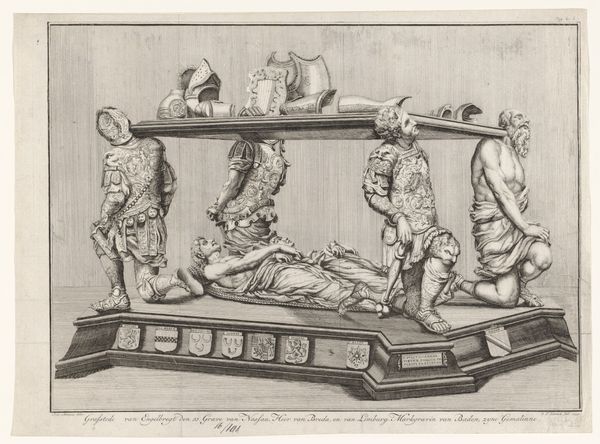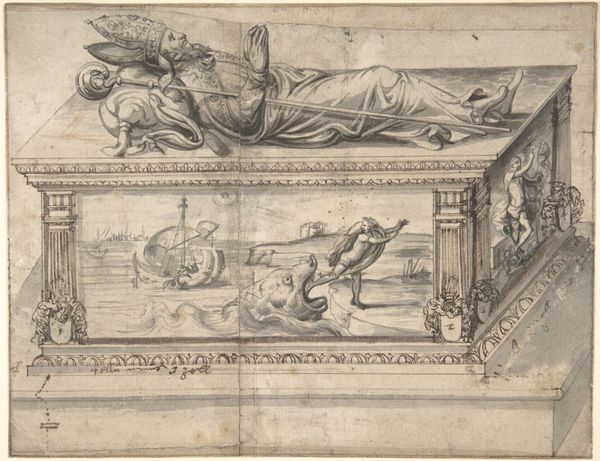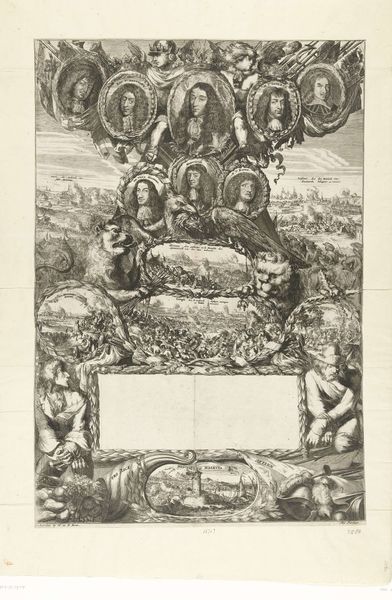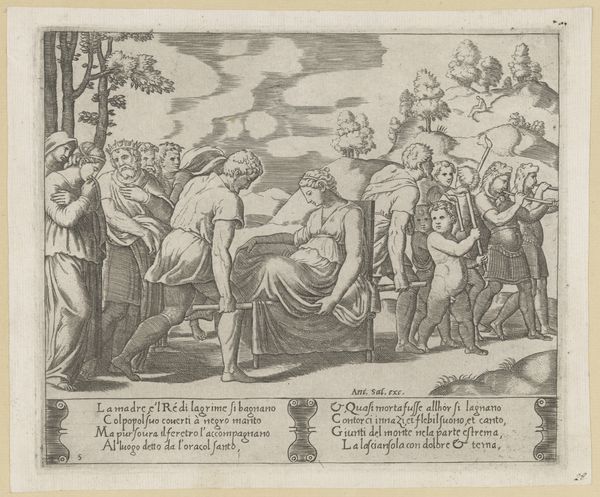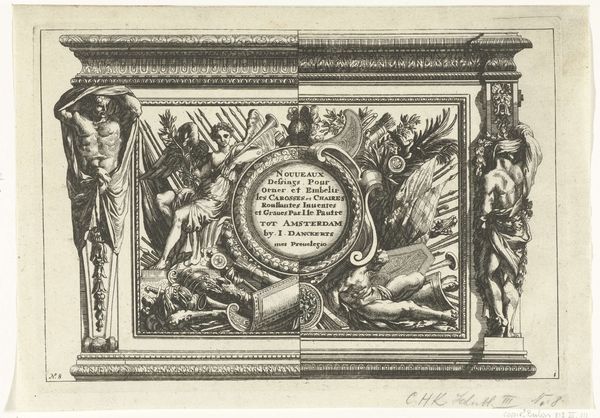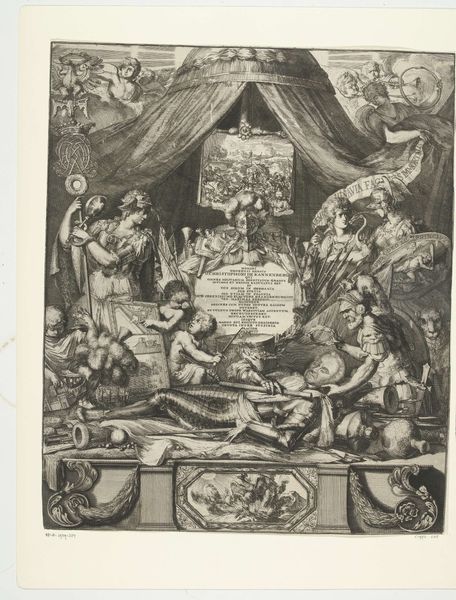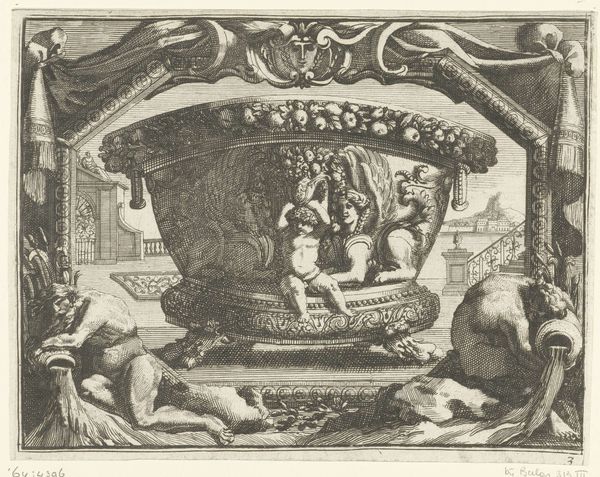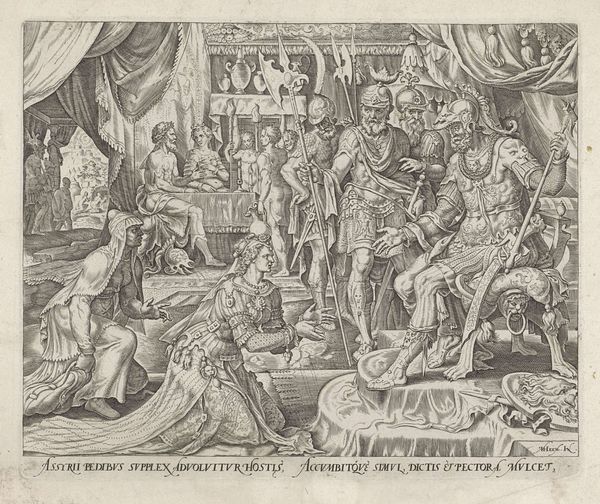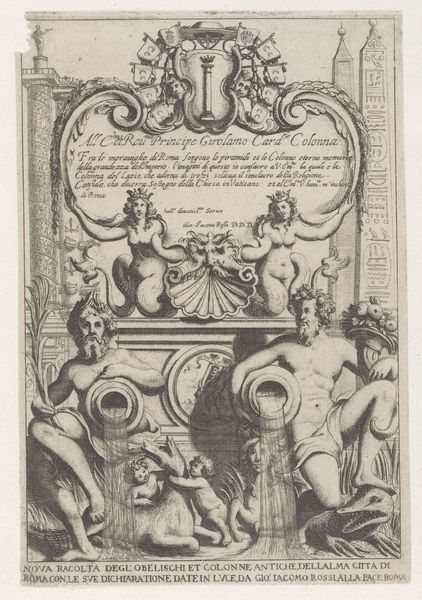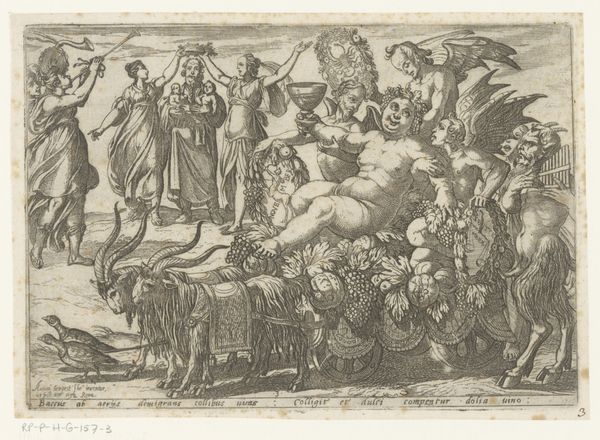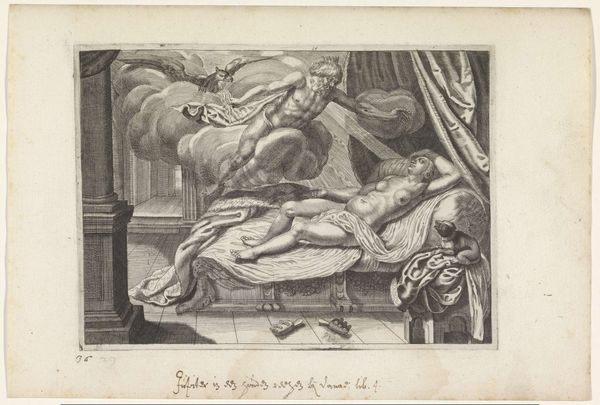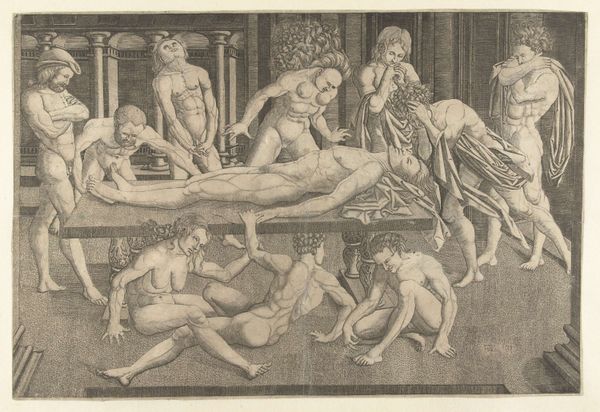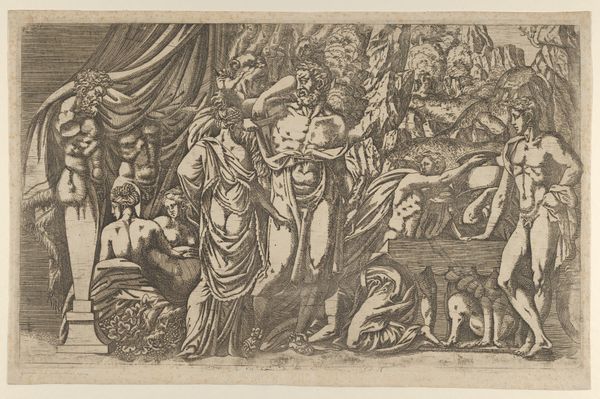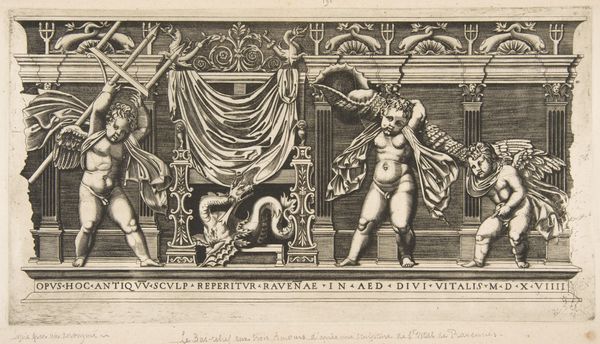
Johan Casimir, paltsgraaf aan de Rijn, in zijn doodskist 1592 - 1594
0:00
0:00
philippuffenbach
Rijksmuseum
print, engraving
#
portrait
#
medieval
# print
#
figuration
#
history-painting
#
northern-renaissance
#
engraving
Dimensions: height 183 mm, width 279 mm
Copyright: Rijks Museum: Open Domain
Philipp Uffenbach's engraving depicts Johan Casimir, a Palatinate Count of the Rhine, laid in his coffin. The scene is rich in symbols: the coffin, the figures of soldiers standing guard, and especially the family coat of arms. The coat of arms carries a potent symbolism of lineage, power, and legacy, a visual assertion of the family's continued influence even in death. This iconography connects to ancient Roman traditions, where family emblems were prominently displayed in funerary processions, embodying ancestral virtues and achievements. We see echoes of this in medieval heraldry and its continued presence in Renaissance and Baroque art. The use of heraldry evokes a collective memory, linking Casimir's personal identity to his family's historical narrative. These motifs become a visual language, communicating not just identity but also societal values, engaging viewers on a subconscious level. The cyclical progression of symbols speaks to a continuous negotiation between past and present, where old forms resurface, evolve, and take on new meanings.
Comments
No comments
Be the first to comment and join the conversation on the ultimate creative platform.
